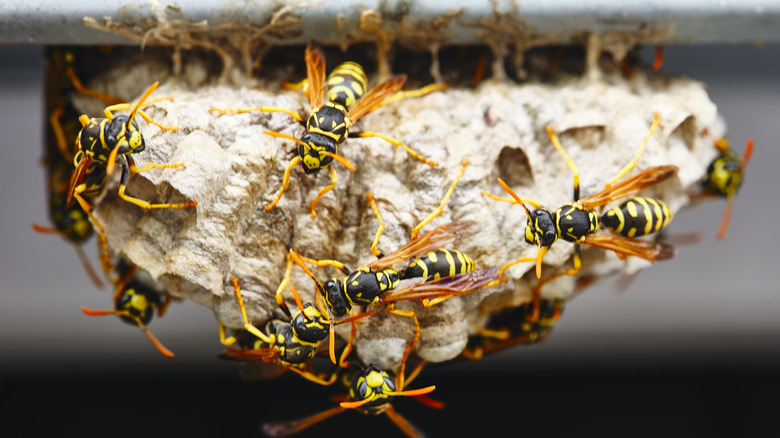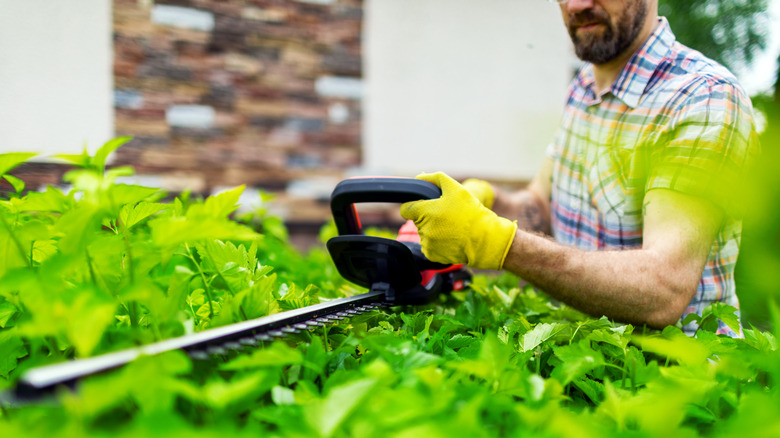Utah's Weather Is Making Wasps More Active In Backyards. Here's What To Do About It
Wasp season officially runs from the late spring to early fall months. These flying insects tend to be most numerous during hotter weather, and you're more likely to see increased activity around home backyards during this time, too. Seasonal wasps in Utah may be even more problematic this summer compared to previous years, though. Warmer-than-average temperatures are fueling local wasp activity, so it's important to be on the lookout for these insects around your property so you can take appropriate action to make your home less inviting to them (like keeping your yard clear of wood and rocks piles, and food debris).
There are many types of wasps you might find in your yard. The most common around North America are vespids, which include an estimated 325 species of hornets, wasps, and yellowjackets. Paper wasps have been historically ubiquitous around urban parts of Utah, and they can also build nests around backyards, too. While these wasps are beneficial thanks to their pollinating and pest-eating activities, they can become dangerous to humans if you get too close to their nests. Paper wasp stings are quite painful, and the insects are known to sting perceived threats multiple times. Currently, some of the most common wasps Utah residents are reportedly seeing around backyards include bald-faced hornets and yellowjackets.
Wasp management is an ongoing process, with home prevention efforts usually needed more so during warmer months in Utah. Unfortunately though, the last couple of seasons have been hotter than normal. Utah experienced one of its hottest summers on record in 2024, and 2025 is not looking much better, with experts predicting above-average temperatures for the season. Compounding the problem is Utah's milder-than-usual winter, which has likely supported increased reproductive activity among local wasps.
What to do about wasps around your Utah home
You can't control increasing temperatures that are fueling an influx in wasp activity around Utah this summer, but you can take steps to make your backyard less inviting to these insects. While an occasional wasp visiting plants in your yard might not be a cause for concern, you don't want them to start nesting around your property.
To that end, it's important to explore ways to prevent wasps from building nests near your home and outdoor spaces. Trimming trees and hedges can help deter wasps from hiding in these spots and building nests. You'll also want to remove any tree stumps or piles of wood and rocks that could be potential nesting sites. Make sure all compost bins and trash cans are sealed shut, and don't leave human or pet food outdoors. You should also clean any debris from your yard on a regular basis, including fallen fruit from trees. Removing sources of standing water, such as birdbaths, puddles, and watering cans can also help deter wasps from calling your yard their home.
In addition to prevention, some homeowners choose to use insecticides that target wasps. Others learn how to make a 4-step DIY wasp trap, or buy commercial yellowjacket traps to help keep the insects clear of their homes. While you can certainly try these methods as long as you follow all package instructions, it is far safer to leave active wasp infestation problems up to pest control professionals. This is especially the case if you find nests around your backyard, which can be dangerous to tackle without the right knowledge and technique.

